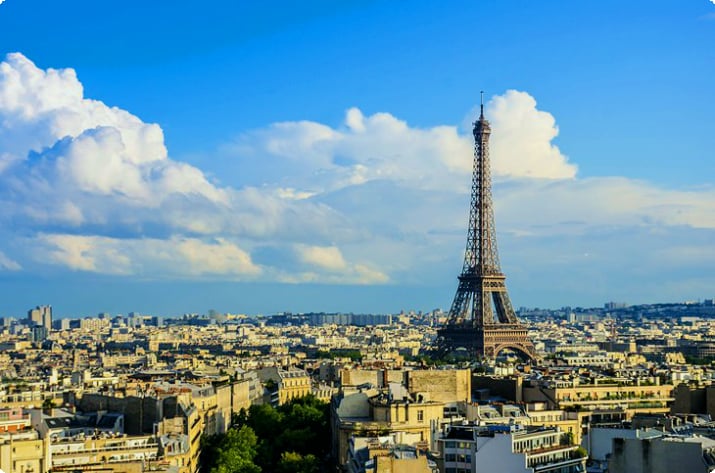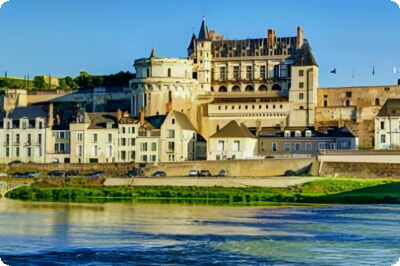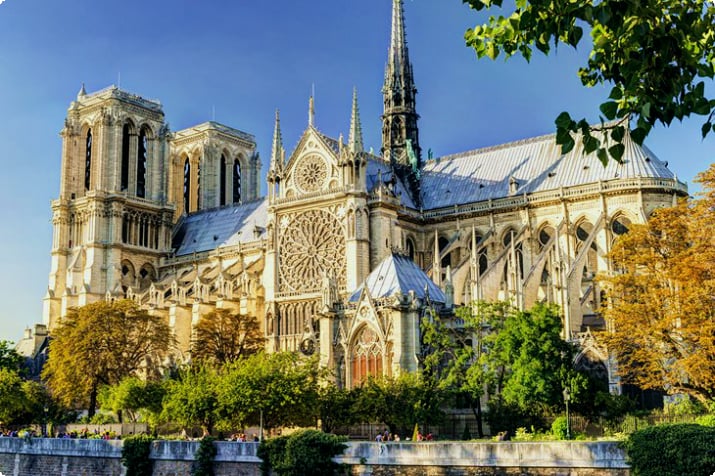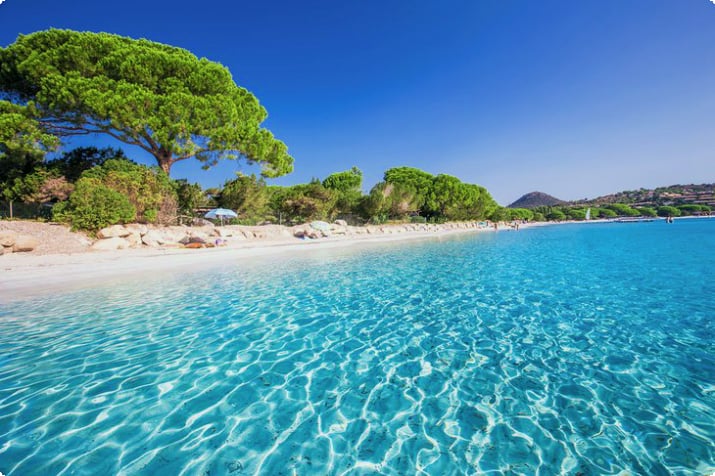The Majestic Notre-Dame Cathedral
Perched on the Île-de-la-Cité, the Cathédrale Notre-Dame stands as a testament to Gothic grandeur, reaching nearly 70 meters into the Parisian skyline. This medieval masterpiece, a pinnacle of French Gothic architecture, was once the tallest structure in Paris for centuries.
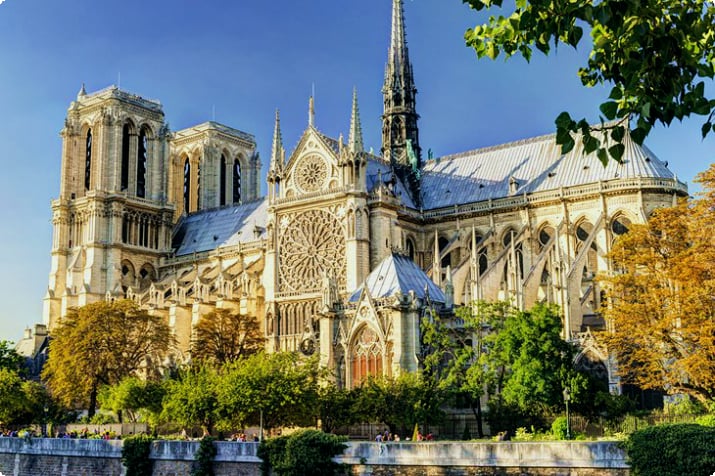
Commissioned by King Louis IX and Bishop Maurice de Sully in 1163, Notre-Dame's construction spanned 200 years, involving a multitude of craftsmen. Its design showcases the innovative use of flying buttresses, which were later added to address structural stress.
Visitors are captivated by the cathedral's intricate facade and the vast nave that radiates tranquility. Stained-glass windows cast ethereal light within, while votive candles enhance the spiritual atmosphere at night.
Note: A devastating fire in April 2019 caused significant damage, leading to the collapse of the medieval roof and spire. Restoration efforts are ongoing, with plans to rebuild the spire to its former glory.
Revolutionary Gothic Architecture – Flying Buttresses
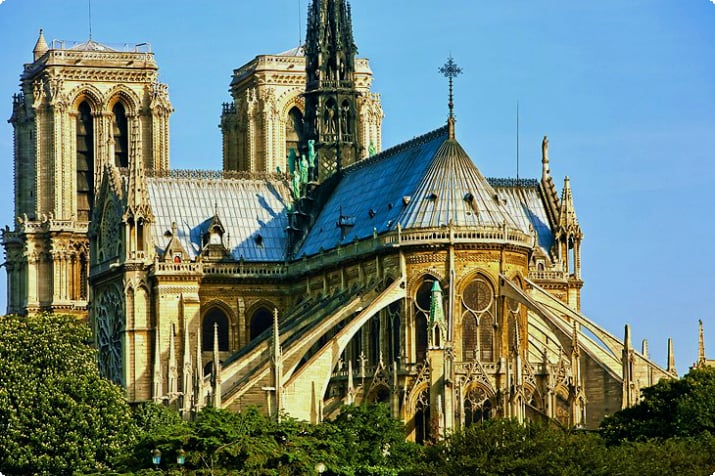
The 13th-century flying buttresses are a hallmark of Gothic innovation, providing essential support to the cathedral's walls. These 15-meter-high arches, resembling spider legs, encircle the building, ensuring its stability without blocking the stained-glass windows. The Square Jean XXIII offers the best view of these architectural marvels.
The West Facade – Kings and Christian Icons
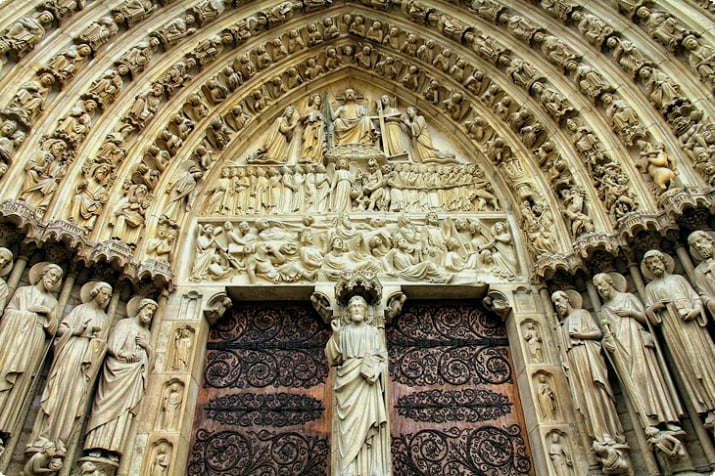
The west front of Notre-Dame showcases the skill of medieval sculptors with its Gallery of Kings and biblical figures. The facade's three portals depict scenes from the lives of the Virgin Mary, the Last Judgment, and the Assumption of the Virgin, surrounded by angels, apostles, and saints.
Cathedral Towers
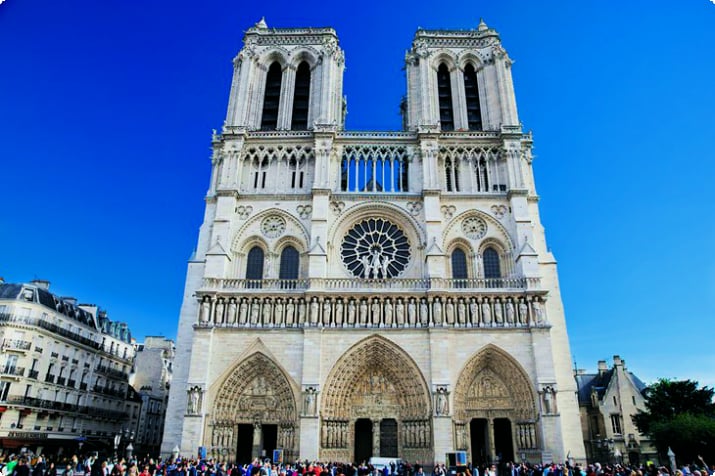
The cathedral's twin towers, spared by the 2019 fire, are iconic features of the Parisian landscape. The North Tower is famous for its Bell Tower, while the South Tower houses the massive Emmanuel Bell.
Gargoyles
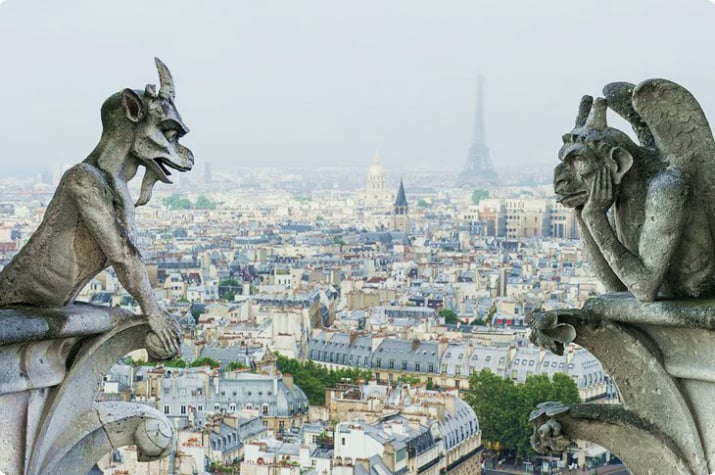
Gargoyles, serving both as rainwater spouts and decorative elements, adorn Notre-Dame. The Galerie des Chimères hosts an array of these grotesque sculptures, from menacing demons to more whimsical creatures.
Stained-Glass Windows
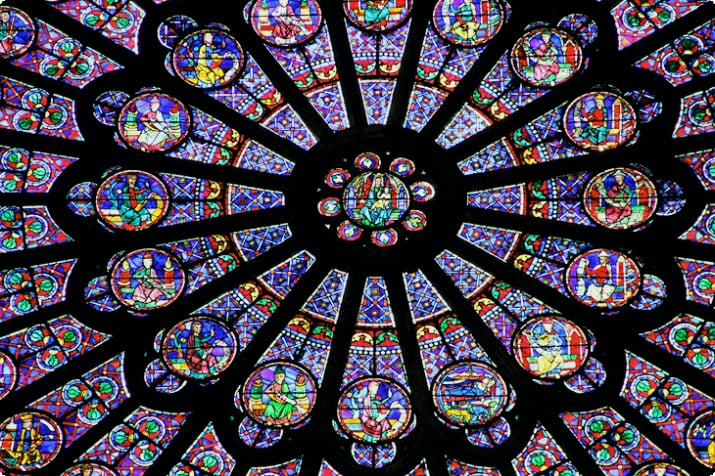
The cathedral's stained-glass windows, particularly the three Rose Windows, are masterpieces of Christian art, dating back to the 13th century. They depict biblical stories and saints in vibrant colors.
The Serene Sanctuary
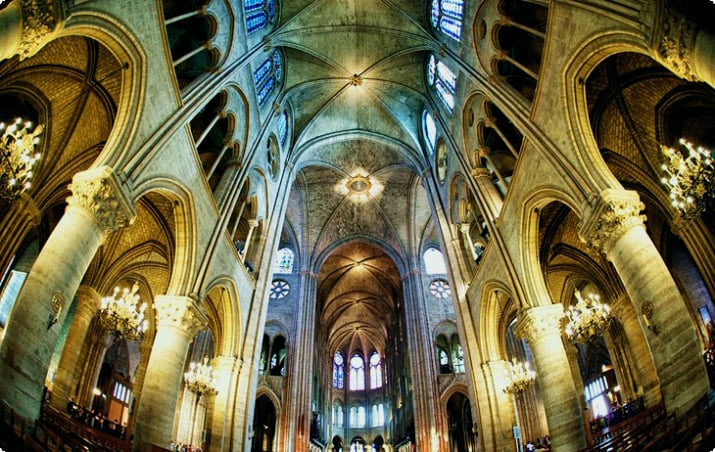
The sanctuary's vastness, with its high-vaulted nave and seating for 9,000, has hosted significant events like Napoleon's coronation. Notably, a collection of 17th-century paintings called "Les Mays de Notre-Dame" survived the fire.
Treasury of Reliquaries
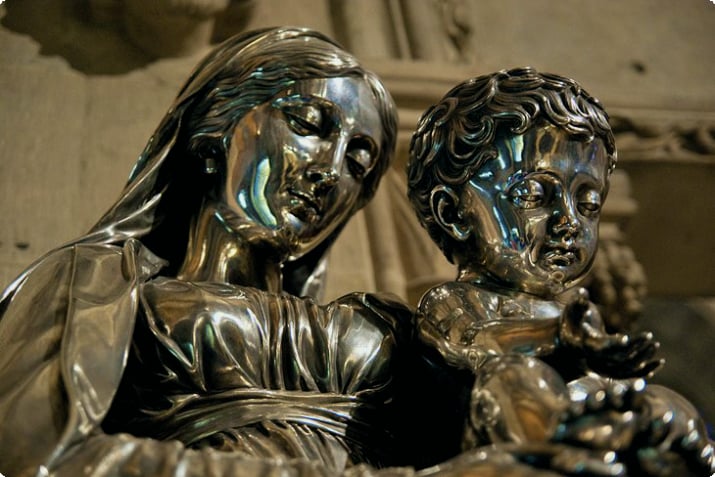
The Treasury, within the cathedral's Sacristy, houses relics and liturgical objects, including the Holy Crown of Thorns, encased in a gilded bronze reliquary.
Crypte Archéologique (Archaeological Museum)
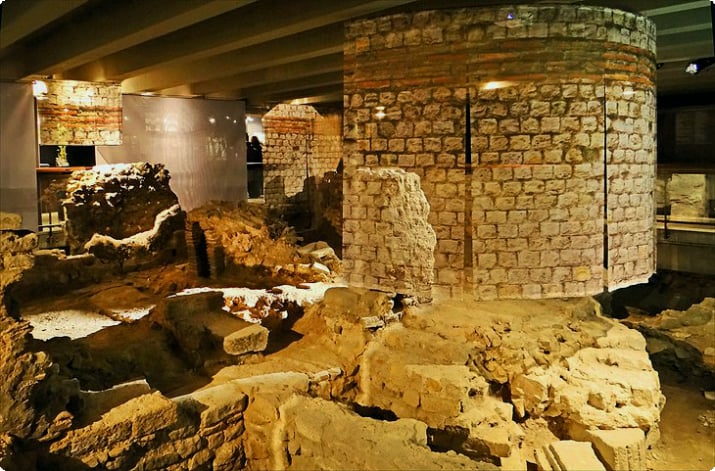
Beneath Notre-Dame lies a crypt revealing Roman-era foundations, now an archaeological museum.
Best Views of Notre-Dame Cathedral
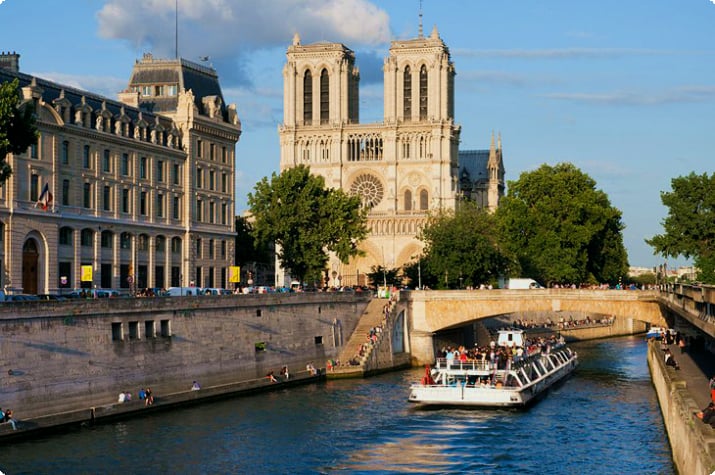
Exceptional views of Notre-Dame can be enjoyed from the Pont Saint-Louis, Pont de la Tournelle, Petit Pont, and Quai du Marché Neuf. A river cruise offers a romantic perspective, especially at night.
Where to Stay near the Cathédrale Notre-Dame de Paris
For accommodation, consider the luxurious Hôtel Dupond-Smith in Le Marais, the stylish Hôtel Monge in the Latin Quarter, or the budget-friendly Hôtel de Roubaix near the Centre Pompidou.
Tips and Tours: How to Make the Most of Your Visit to Cathédrale Notre-Dame de Paris
- Join a guided tour to learn about the cathedral's history and explore the Ile de la Cité and Latin Quarter.
- Enjoy a meal with a view of Notre-Dame at a péniche or the Tour d'Argent restaurant.
- Access Notre-Dame via the Métro, RER, or bus, with stops conveniently located nearby.
Address
- Cathédrale Notre-Dame de Paris, 6 Parvis Notre-Dame - Place Jean-Paul II, Paris
- https://www.notredamedeparis.fr/


